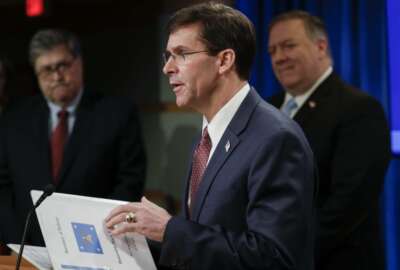
Army releases five-year plan to better diversity, equality and inclusion
The plan will look at Army policies, biases and even marketing to bring the best talent to the top.
The Army is implementing a five-year plan that institutes structural, organizational, procedural and command changes to become a “model example of diversity, equality and inclusion.”
The new policy outlines five objectives that civilian managers and military commanders will follow in hopes of reflecting the racial makeup of the nation, making the Army more dynamic through diversity and advancing the most talented employees to the top.
The military has 11 times more white officers than senior officers of color. Only eight out of every 100 senior officers is a Black person, according to the Congressional Research Service. In the enlisted realm, 63% of senior enlisted troops are white, while 19% are Black.
“Our most recent efforts, what we call Project Inclusion, are very focused on implementing putting individuals in the right spot in the diversity space,” E. Casey Wardynski, Army assistant secretary for manpower and reserve affairs, told reporters Thursday. “We want to have diverse teams of talent that are focused on the individual and what individuals bring to the table. We want systems in place to allow that to happen across the United States Army.”
Lt. Gen. Gary Brito, Army deputy chief of staff for personnel, added that diversity, inclusion and equality are essential for the cohesion of the Army as it moves forward.
“It is important to create an environment where every single soldier, regardless of their race, gender, religion or background, has opportunities to excel with their proven and demonstrated talents,” he said. “We are taking a very strong look at our systems and our practices that may have been legacy and focusing now in a modern data-driven talent management process. This will ensure that any institutional practice that may inadvertently disadvantage any individual simply based on character on race, gender, or any characteristics will not prevent him or her from executing our core mission, which is key for the United States Army.”
Project Inclusion will ask Army leaders to look at current governance structures to ensure they are in line with diversity, equality and inclusion.
“Staffing requirements, regulations, and resources must be addressed throughout the Army,” Army officials wrote in the policy. “Diversity staffing should be determined and approved through existing processes. Some actions may require feasibility studies to determine the best utilization of available personnel and funding, any changes to law and the possible creation of separate officers to focus on statutory/regulation compliance and diversity, equality and inclusion principles.”
That includes looking at how the Army markets itself.
The Project will also develop standards, methods and procedures for implementing diversity and equality. It will do that by looking at leadership practices, creating a process to measure effectiveness and creating a council to approve policy and develop new initiatives.
The Army will conduct a review of its people, processes and policies to ensure it is acquiring, developing and employing the best talent possible.
Another objective implements new training to meet the demands of the total force.
“Training should center on building trust, developing leaders who value differences, treating diverse individuals equitably, helping soldiers and civilians understand their potential biases, and creating shared understanding through open, two-way communication,” officials wrote. “By modeling and reinforcing these behaviors for soldiers and civilians, leaders create environments where all personnel are included in decision-making processes, integrated into the group, treated with dignity and respect, and trust their leaders to do what is fair and equitable.”
Finally, the policy requires the Army to maintain an inclusive environment where diverse attributes, experiences and backgrounds ensure mission readiness.
This will be accomplished through listening sessions and a review of Army policies for potential bias.
“We’ve essentially taken all the objectives in the Army People Strategy, which have been well published, and operationalizing them across the United States Army at all ranks in all echelons and to make it stick,” Brito said. “We are institutionalizing it with the processes, through talent management, feedback, exit surveys from the soldiers and relooking at how we recruit, mentor and offer career coaching.”
Project Inclusion is an annex to the Army’s People Strategy, which the service rolled out last year in hopes of moving its talent management system into the 21st century and away from the industrial era.
It comes after a summer of racial unrest across the nation after multiple incidents of police officers killing Black people.
The Defense Department already announced it would remove pictures from promotion board files to reduce bias.
DoD is also setting up a race review board to make recommendations to better diversity, equality and inclusion.
Copyright © 2025 Federal News Network. All rights reserved. This website is not intended for users located within the European Economic Area.
Scott Maucione is a defense reporter for Federal News Network and reports on human capital, workforce and the Defense Department at-large.
Follow @smaucioneWFED





